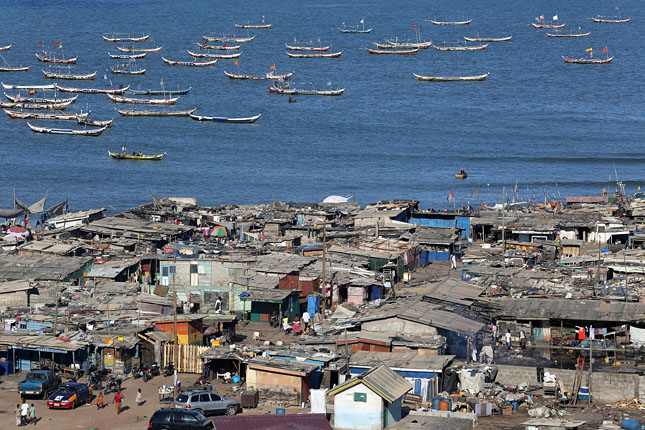-
Perception Matters: New Insights Into What Determines Resilience
June 27, 2016 By Christophe Béné
Resilience is increasingly recognized as a powerful concept to help practitioners, academics, and policymakers better understand how people respond to shocks and stressors, and how those responses can be linked to longer-term positive or negative development outcomes, such as wellbeing or food (in)security.
Building resilience, alongside novel analysis on vulnerabilities, can improve our ability to prepare for adverse events and conditions. In response to the impacts of climate change, resilience can be a game changer. The problem is that our understanding of what determines people’s resilience has been mainly theoretical and highly academic so far. Very little of this has been applied or tested empirically.
In a recent article published in Global Environmental Change, a group of international researchers working in four different countries in Africa and Asia explored some of the mechanisms behind the current empirical determinant of resilience. We were especially interested in getting better insight into the “psycho-social” factors that influence and affect individual and collective capacity to respond to shocks and stressors, like drought or fishery collapse.
Not Just About Income or Assets
Our assumption was that resilience is not simply a function of tangible factors, such as income, assets, or even level of education, but also has important subjective dimensions related to less tangible elements such as people’s individual perceptions and self-confidence about their own ability to handle future events – what we propose to call “subjective resilience.”
The findings of the research reveals a series of notable results which challenge our conventional models of what determines household and community resilience in low-income countries.
People’s responses are at least in part socially constructed, subjective, and shaped by norms and valuesConducted in eight coastal communities in Fiji, Ghana, Sri Lanka, and Vietnam, the research first confirms what we had suspected but had problems pinpointing: that less tangible factors such as social capital (the quality of the relationship between members of the communities) are an important element in the resilience of those communities. But the work also shows that this relationship is not as simple and linear as is often assumed. In particular it seems that the scale at which such intangibles are considered (household or community, for example) is critical.
Perhaps even more importantly, the data collected reveals that people’s subjective resilience significantly affects the type of strategy they adopt in response to shocks and stressors. Households that show higher subjective resilience seem to be characterized by a lower probability to engage in negative coping strategies in the aftermath of a shock, such as reducing expenses or food consumption, borrowing money, or selling assets. Development practitioners and policymakers work hard to avoid these negative coping strategies since they are generally recognized to lead to detrimental outcomes in the long term. The data also reveals that households with higher levels of subjective resilience are more likely to engage in transformative adaptation strategies, such as investing in new economic activities.
In other words, perception about one’s own ability to handle adverse events seems key in determining whether people engage in particular types of responses.
Building Better
These empirical findings are critical in the context of the discussion about resilience. They suggest that people’s decisions and actions in response to shocks and stressors are at least in part socially constructed, subjective, and shaped by deeply embedded cultural and societal norms and values. Some of these processes operate at the individual level, others at the community level.
Key social variables that relate explicitly to cognitive and subjective elements (e.g., perception about risk, ability to embrace change, or individual and collective attitude to adversity) are just as important as the more material elements that are often emphasized in the ability of people to buffer shocks (e.g., income, assets, property rights).
The implications of these findings are important for the design of resilience interventions and other similar development programs. So far, the vast majority of “resilience building” efforts proposed by NGOs and international development agencies in Africa and the rest of the world have focused on the more tangible and measurable elements of resilience, through activities such as livelihood diversification, micro-enterprise development, and climate-smart agriculture promotion. The results of this research demonstrate the importance of the less tangible elements of resilience such as risk perception, fatalism, self-confidence, or households’ perception about their own capacity to handle future shocks and stressors.
Those results, if confirmed by similar research in other countries, would mean that, in addition to the activities addressing the more tangible elements of resilience, current and future interventions should direct some of their efforts toward these more subjective elements to maximize impact and truly prepare people for the unexpected.
Christophe Béné is a senior policy advisor at the International Center for Tropical Agriculture (CIAT) based in Cali, Colombia. He is currently involved in several initiatives around the challenge of measuring and assessing the impact of resilience interventions.
Sources: Global Environmental Change.
Photo Credit: A fishing community in Jamestown, Accra, Ghana, courtesy of Dominic Chavez/World Bank.
 A Publication of the Stimson Center.
A Publication of the Stimson Center.



